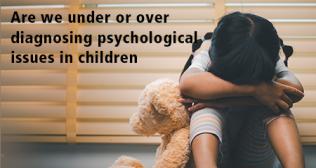
Understanding Anxiety Disorders

There would have been innumerable times in each of our lifetimes when we have felt worried, anxious or tensed. This is not uncommon especially to feel nervous in a particular situation. However, when such feelings of sudden and intense fear or discomfort rise to a peak within a few minutes in the form of panic, or repeated thoughts related to the worry become pervasive over a period of time, leading to significant impairment in the individual’s personal, social or occupational functioning, it is more likely to constitute some form of an anxiety disorder.
Such disorders are typically characterized by excessive fear and anxiety, which is persistent and not simply a transient fear or anxiety which could be stress-induced. It is important to understand that an individual who has experienced a panic attack tends to become worried or apprehensive about having similar experiences of anxiety in the future, and worries about the consequences of such possibilities. As a result, they tend to make all efforts to avoid situations or circumstances which they might consider as potential possibilities for the recurrence of such a panic attack or anxiety provoking situations in the future.
Signs and symptoms
The experience of anxiety is a physiological process, which can be triggered in a situation which is perceived as being potentially dangerous, and the brain sends such a message to the autonomic nervous system, thereby activating a fight or flight response.
Physical symptoms:
- Breathlessness
- Sweating
- Heart pounding
- Trembling
- Involuntary urination
- Numbness or tingling sensations
- Dizziness or giddiness
- Indigestion
- Headache
- Nausea or vomiting
Psychological symptoms:
- Difficulty in attention and concentration
- Forgetfulness
- Feeling of losing control
- Fear of going crazy or dying
- Constant worrying or rumination
- Low self-esteem
- All or none thinking
Behavioural symptoms:
- Fatigue
- Restlessness
- Disturbed sleep
- Irritability
- Avoidance of anxiety provoking situations
- Seeking reassurance
Causes
Multiple theories and contributing factors have been suggested for contributing towards the development of anxiety disorders. However, no single causative factor has been fully implicated. The etiology involves an interaction between genetic, biological, and psychosocial factors. In terms of biological factors, the role of neurotransmitters has been clearly established in the causation of anxiety disorders. Specifically, lower levels of serotonin have been found to be associated with social anxiety disorder as well. Genetically, most anxiety disorders have a tendency to run in the family. Children with at least one parent having any anxiety disorder have higher chances of being diagnosed with social phobia. Besides the biological and genetic factors, many psychological and social stressors like trauma, loss of a dear one, difficulties in relationships, work-stress, change in environment, and other life-challenges can be a trigger for symptoms of anxiety.
Treatment and Seeking Help
Mounting evidence indicates the effectiveness of using psychological approaches in significantly reducing the symptoms of anxiety disorders. Aiming at providing relaxation techniques, such approaches also help the individual boost his/her confidence and self-esteem, and encourage the person to face the anxiety provoking situations. Further, a combination of medications and psychological approaches, social skills and assertiveness training could help regulate the production of ‘serotonin’, the neurotransmitter in the brain which contributes to anxiety, while also developing more adaptive coping mechanisms.
What is important to remember is that anxiety is treatable, and professional help is irreplaceable. The person suffering is often ridiculed for a lack of confidence and courage, and may even be snubbed by others. Often people may choose to hide their symptoms, in fear of embarrassment or stigma. If you are finding it difficult to deal with the anxiety, do not hesitate to ask for help. Such recurrence of anxiety can be severely debilitating for a person’s personal, social as well as occupational functioning and can lead to a state of burnout and exhaustion, making the individual more vulnerable to experience depressive or anxiety features. It is imperative to encourage a supportive environment for the earliest identification and adequate psychiatric and psychological intervention.
Categories
Clear allMeet the doctor

- Mental Health and Behavioural Sciences | Mental Health and Behavioural Sciences | Psychiatry | Clinical Psychology
-
21 Years
-
900



















